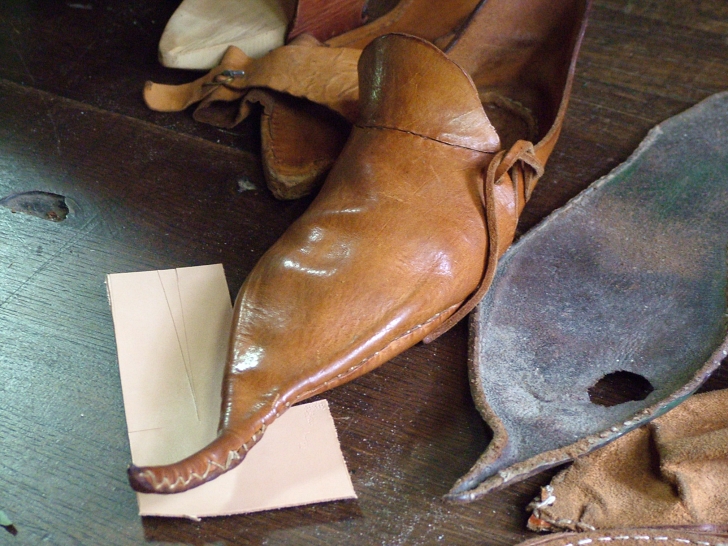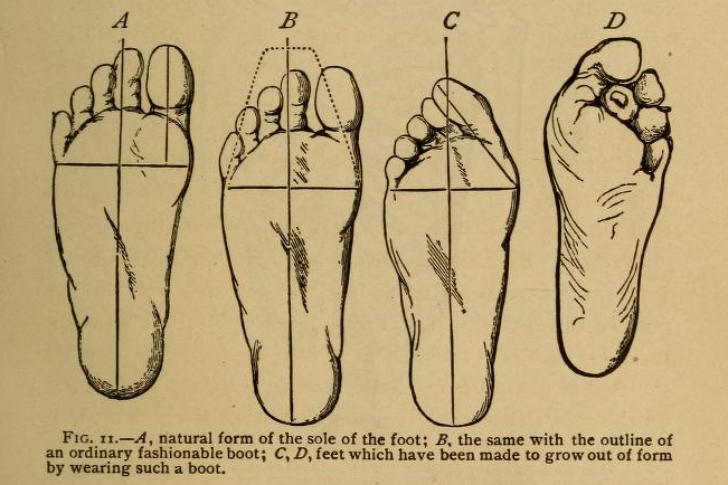The Medieval Fashion Statement That Gave Everyone Bunions
What some people go through for fashion.
Throughout human history clothing has played an important role in not only keeping us protected and warm, but also in telling the world about the wearer’s social status. For centuries commoners often only had 2 outfits: one for everyday and one “for best”. But, for the aristocracy and even the elite merchants during the medieval period fashion was something very precious and it put wealth and status public display. In this era some very inventive fashions were popular, including the horned veils known as a hennin hats and long, wool kirtles with belled sleeves. But, there was one fashion during the Middle Ages that actually caused health problems: the poulaine shoe.

The footwear was known by many names at the time because it was found all over Europe. It has been called the crakow shoe because some believe it was invented in the Polish city of Krakow. In England these shoes were known as pikes since the tips were like spikes.
The shoes were usually made from leather and featured exaggerated toes that projected forward ahead of the wearer. This style was in Europe as early as the 12th century, but rose to the height of fashion in the 14th and 15th centuries.

The fashions of the day called for increasingly-longer and longer toes to keep up with the Jones’. This was a game for the upper classes since overly-long shoes were impractical to walk in, let alone do manual labor in. One account from a 14th century monk noted that the longest of these shoes reached around 45 centimeters (or around 17 inches). Members of the clergy called the shoes “Satan’s claws” since church-goers were unable to kneel properly wearing such long shoes.
To support the longer toes the tips of the shoes would be filled with moss or horsehair. But, the longest shoes had to have additional support from silk ribbons or chains that wrapped around the shins. To make matters even worse soft-sole shoes would have been protected from dirt and moisture by wearing pattens which were wooden platforms shaped to fit under the wearer’s shoes. Pattens elevated the wearer (and their shoes) from the filth and wastewater present in many medieval streets.

A law was eventually passed in France that prohibited these shoes altogether and in England sumptuary laws were passed that limited the length of the ill-fated pike shoes for anyone under the status of a lord, thereby restricting them to only the highest levels of society.
Not only were the shoes a societal problem, new archaeological research indicates that these shoes were also health hazards. A new article published in the International Journal of Paleopathology studied the remains of 177 adults who were buried in Cambridge between the 11th and 15th centuries. The remains came from 4 cemeteries in the area and revealed higher numbers of bunions in the centuries when pike shoes were most popular.
Bunions (also known as hallux valgus) are caused when the bones of the big toe and the other associated metatarsal bones shift inwards towards the other toes. This is most often caused by injury or from repeated wearings of high heel shoes or shoes with pointed toes, though sufferers are thought to be genetically predisposed to the condition before any changes are inflicted.

In total 31 of the remains were found to have bunions, 20 of which were male. The higher prevalence of bunions in men lines up with the known history of the shoes. Though both men and women wore poulaines, men were the much more likely to be wearing the longer lengths of this shoe.
The study was headed by Dr. Piers Mitchell of the University of Cambridge, who later remarked that, “People really did wear ridiculously long, pointy shoes, just like they did in Blackadder.”
SKM: below-content placeholderWhizzco for DOT

